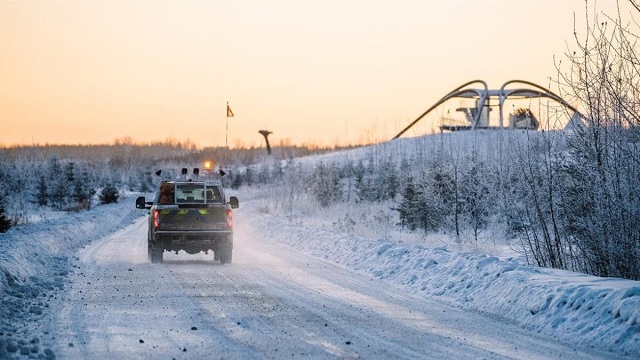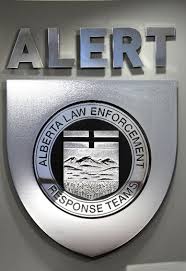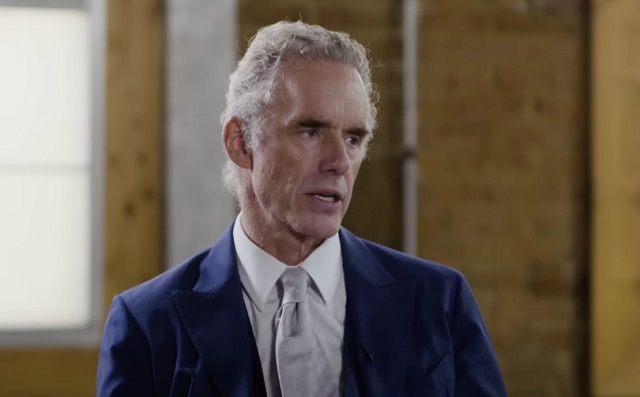Alberta
A Matter of Fact: AP news story misrepresents the oil sands by ignoring environmental progress

A truck approaches Wapisiw Lookout, the first reclaimed tailings pond in the oil sands industry. Photo courtesy Suncor Energy
From the Canadian Energy Centre
Producers reducing emissions per barrel, on track for absolute emissions reductions
A widely-circulated article this week by the Associated Press misrepresents Canada’s oil sands industry by ignoring its progress improving environmental performance and its commitment to achieving climate targets.
Here are the facts.
Fact: Canadian oil is not “the world’s dirtiest”
The article repeats the false narrative that oil from the oil sands is far “dirtier” than other crudes produced around the world. This is not the case.
Analysis by S&P Global found that average oil sands emissions per barrel are in the range of other crude oils consumed in the United States, the industry’s main customer.
Average oil sands emissions per barrel range from 1.6 per cent below to 8.6 per cent above, depending on production process, S&P Global predecessor IHS Markit reported in 2018.
Canada’s oil sands producers are doing more to reduce emissions than operators in other countries, according to BMO Capital Markets.
Between 2013 and 2021, BMO estimates the average oil sands barrel shaved off more than 22 kilograms of emissions, compared to a reduction of just five kilograms per barrel for other major global oil producers.
Fact: Oil sands producers reducing emissions per barrel, on track for absolute emissions reductions
The AP article makes no mention of the success oil sands producers have achieved reducing emissions per barrel. That so-called emissions intensity is now estimated to be 23 per cent lower than it was in 2009, according to S&P Global.
Further, there is no mention that the success reducing emissions per barrel is catching up to production growth, and total oil sands emissions may be close to their peak.
Last year, for the first time since S&P Global started estimating the data, oil sands production went up, but emissions did not.
Total oil sands emissions were 81 megatonnes in 2022, nearly flat with 2021 despite a production increase of about 50,000 barrels per day.
Last year analysts predicted that absolute oil sands emissions would start going down by 2025. The new findings indicate that could happen sooner. And that’s before shovels hit the ground for the Pathways Alliance’s foundational carbon capture and storage (CCS) project.
Fact: Pathways Alliance collaboration is critical to emissions reduction
The AP article leaves out any mention of the Pathways Alliance, one of the most significant environmental initiatives ever undertaken in Canada.
Six companies representing 95 per cent of Canada’s oil sands production are working together with the goal of net zero emissions in their operations by 2050.
With anticipated co-funding support from Canadian governments, the Alliance has announced plans to invest about $24 billion before 2030 in the first phase of its plan.
This includes $16.5 billion on the foundational CCS project and $7.6 billion on other technologies like switching to clean hydrogen and electricity to power oil sands operations.
About half of the targeted 22 million tonne per year emissions reduction by 2030 will come from CCS, with a network connecting CO2 capture at an initial 14 oil sands facilities to a storage hub in northern Alberta.
Fact: CCS projects in Canada are working
The AP article perpetuates the inaccurate position that CCS is not a proven technology. But CCS in Canada has successfully operated for more than two decades.
Canada has six of the world’s 39 commercial CCS operations, accounting for about 15 per cent of global CCS capacity even though Canada generates less than two per cent of global CO2 emissions, according to the International CCS Knowledge Centre.
In Alberta, since 2015 two CCS projects – both tied to oil sands production – have safely stored more than 12 million tonnes of CO2, or the equivalent of taking more than 2.6 million internal combustion engine vehicles off the road.
Fact: The world needs oil now and long into the future
While activists trumpet the narrative that the world is rapidly transitioning away from fossil fuels, the reality is oil and gas will be around for a long, long time.
Even as more renewable and alternative energy sources become technically and economically feasible at a large scale, on the current trajectory the International Energy Agency (IEA) projects that oil alone will still supply 26 per cent of world energy needs in 2050. That’s down only modestly from 30 per cent in 2022.
Even in the IEA’s unlikely net zero scenario – which would require unprecedented global cooperation and includes more than a third of emissions reductions coming from technologies that do not yet exist – oil still accounts for 8 per cent of world energy supply in 2050.
Oil demand for non-energy use (like pavement, which improves in quality when using oil from Canada’s oil sands) even continues to increase in the IEA’s net zero scenario, rising to 6 per cent of world energy use in 2050, from five per cent in 2022.
Canada’s oil sands industry leads the world in its commitment to continuous improvement in environmental performance and emissions reduction, and this should be recognized by media outlets including the Associated Press.
Alberta
Principal at Calgary Elementary School charged with possession of child pornography

News release from the Alberta Law Enforcement Response Team (ALERT)
Calgary school principal charged
A Calgary school principal has been charged with offences relating to child sexual abuse materials following an investigation by ALERT’s Internet Child Exploitation unit.
ICE charged Bruce Campbell on April 16, 2024 with possessing and accessing child pornography. The 61-year-old man was employed as a principal at Sacred Heart Elementary School in Calgary.
“Currently we believe these offences are solely related to online activities, but can appreciate how parents and students would be shocked and concerned about these charges,” said Staff Sergeant Mark Auger, ALERT ICE.
Campbell allegedly uploaded child sexual abuse materials via Skype and ALERT was notified via the RCMP’s National Child Exploitation Crime Centre in January 2024.
Campbell’s Calgary home was searched and a number of phone and computers were seized. A preliminary forensic analysis of the seized devices found child sexual abuse materials on his work-issued cellphone.
While the investigation and charges are related to online offences, the nature of Campbell’s employment placed him in a position of trust and authority. ICE is encouraging anyone with information about this case to come forward and contact police. Anyone with information is encouraged to contact local police or Crime Stoppers (1-800-222-TIPS).
Campbell was released from custody on a number of court-imposed conditions, and is awaiting his next scheduled court appearance on May 10, 2024 in Calgary.
ALERT was established and is funded by the Alberta Government and is a compilation of the province’s most sophisticated law enforcement resources committed to tackling serious and organized crime.
Alberta
Former senior financial advisor charged with embezzling millions from Red Deer area residents

News release from Alberta RCMP
Former senior financial advisor charged for misappropriating nearly $5 million from clients
On April 4, 2024, the RCMP’s Provincial Financial Crime Team charged a Calgary resident for fraud-related offences after embezzling millions of dollars from his clients while serving as a senior financial advisor.
Following a thorough investigation, the accused is alleged to have fraudulently withdrawn funds from client accounts and deposited them into bank accounts he personally controlled. A total of sixteen victims were identified in the Red Deer area and suffered a combined loss of nearly $5 million.
Marc St. Pierre, 52, a resident of Calgary, was arrested and charged with:
- Fraud over $5,000 contrary to section 380(1)(a) of the Criminal Code; and,
- Theft over $5,000 contrary to section 344(a) of the Criminal Code.
St. Pierre is scheduled to appear in Red Deer Provincial Court on May 14, 2024.
“The ability for financial advisors to leverage their position to conduct frauds and investment scams represents a significant risk to the integrity of Alberta’s financial institutions. The investigation serves as an important reminder for all banking clients to regularly check their accounts for any suspicious activity and to report it to their bank’s fraud prevention team.”
- Sgt. John Lamming, Provincial Financial Crime Team
The Provincial Financial Crime Team is a specialized unit that conducts investigations relating to multi-jurisdictional serious fraud, investments scams and corruption.
-

 Automotive1 day ago
Automotive1 day agoThe EV ‘Bloodbath’ Arrives Early
-

 CBDC Central Bank Digital Currency1 day ago
CBDC Central Bank Digital Currency1 day agoA Fed-Controlled Digital Dollar Could Mean The End Of Freedom
-

 Business2 days ago
Business2 days agoHonda deal latest episode of corporate welfare in Ontario
-

 Frontier Centre for Public Policy21 hours ago
Frontier Centre for Public Policy21 hours agoHow much do today’s immigrants help Canada?
-

 espionage2 days ago
espionage2 days agoOne in five mail-in voters admitted to committing voter fraud during 2020 election: Rasmussen poll
-

 Brownstone Institute1 day ago
Brownstone Institute1 day agoThe Numbers Favour Our Side
-

 Fraser Institute32 mins ago
Fraser Institute32 mins agoFederal government’s fiscal record—one for the history books
-

 Alberta13 mins ago
Alberta13 mins agoPrincipal at Calgary Elementary School charged with possession of child pornography







